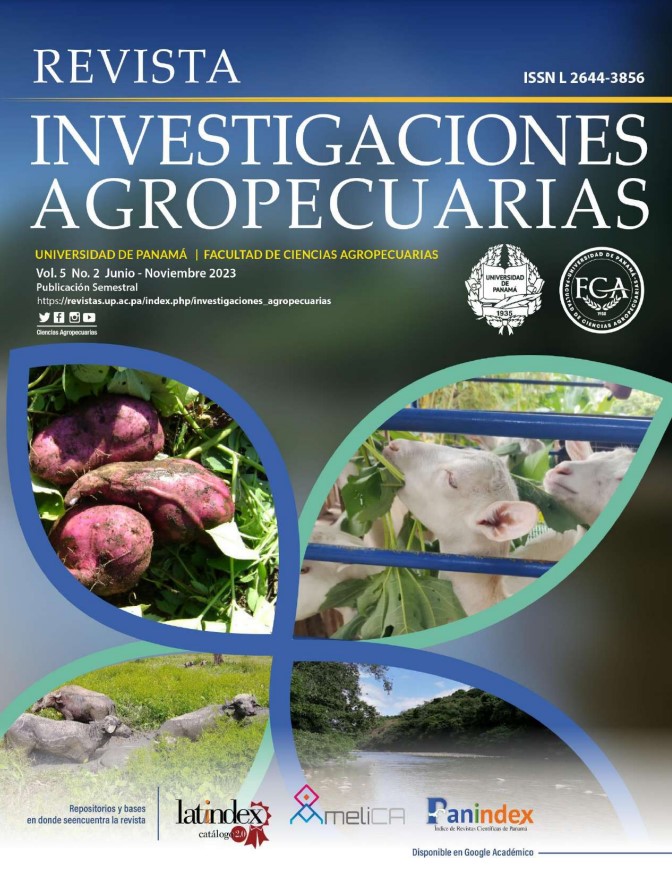

Copyright (c) 2023 Revista Investigaciones Agropecuarias

This work is licensed under a Creative Commons Attribution-NonCommercial-ShareAlike 4.0 International License.
The incidence of Dermatobia hominis larvae after the application of Amitraz (12.5%) for the control of flies in field conditions was evaluated. Observations were carried out from 1 to 30 March 2022, with animals located in the town of Donoso, Costa Abajo de Colón, Panama. 76 animals were used, which received the product by spraying with a back pump at a rate of 1:600 parts of water. At the time of application, 20 animals were randomly selected to count the number of larvae (Control Group). Subsequently, 19 animals were randomly selected every seven days to count the number of larvae. Thus, information was obtained for days seven (Ddt_07), fourteen (Ddt_14), twenty-one (Ddt_21) and twenty-eight (Ddt_28). The larvicidal action was evidenced by the number of live larvae of D. hominis found on the animal's body. The records were compared according to color (light and dark) and animal category (adults, young bulls and calves) (ANOVA and Duncan Test; p<0.05) and the graphics were made with the Ggplot2 package (Wickham, 2016). The percentage reduction of the number of larvae (PRNL) was calculated with the formula (X? - xi) * 100 / X?, being the efficiency achieved when the PRNL was equal to or greater than 95%, with a significant result of the Duncan Test. The results showed that the presence of larvae of D. hominis was common during the study period, that the most affected animals were the dark-colored adults and that the application of amitraz (12.5%) by spraying was not effective under the evaluated conditions.